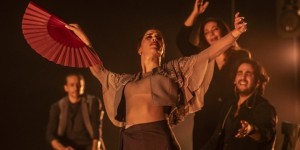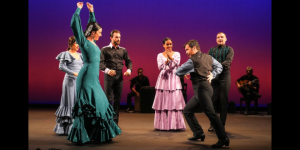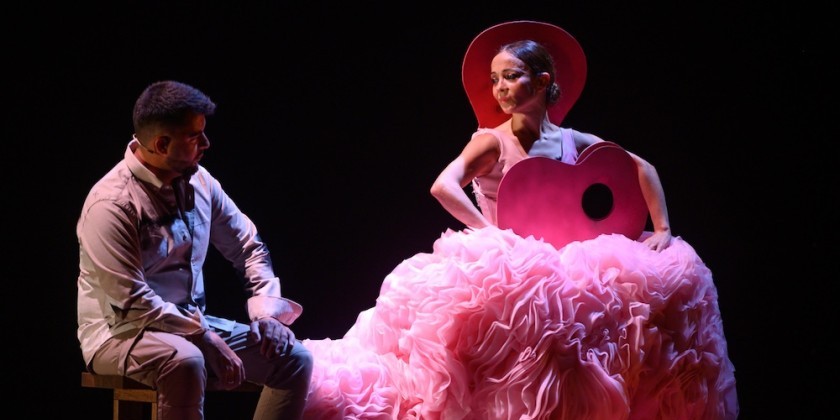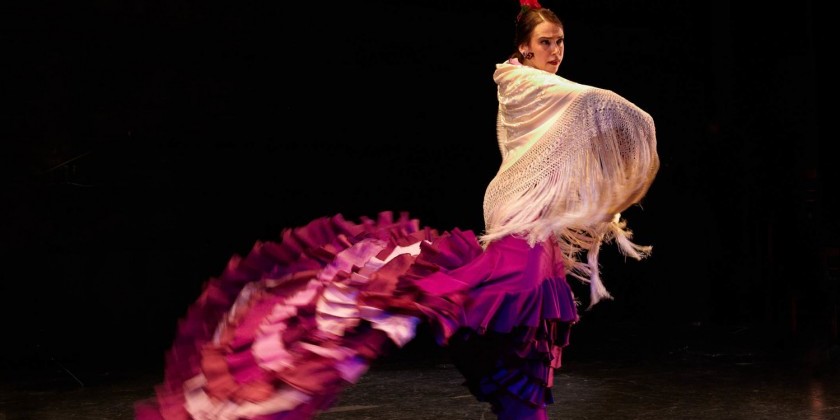DAY IN THE LIFE OF DANCE: Getting to Know Omayra Amaya and "Antes Del Fin"
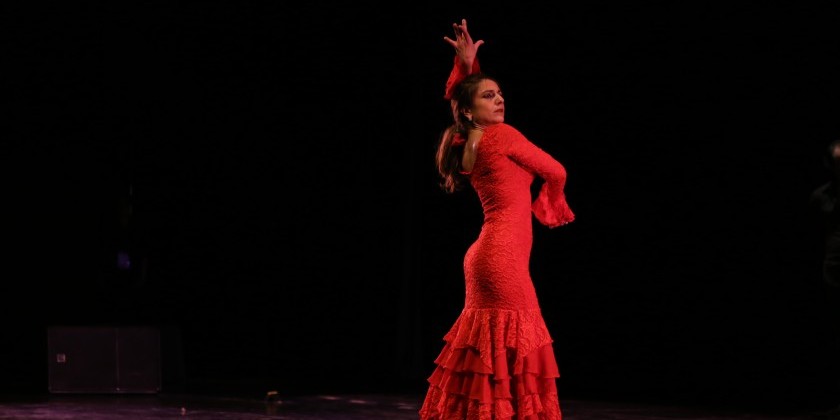
The Omayra Amaya Flamenco Dance Company in "Antes del Fin" at Arrow Street Arts in Cambridge, MA
WHO: Omayra Amaya Flamenco Dance Company
WHAT: World premiere of ANTES DEL FIN
WHEN: January 31 - February 2, 2025
WHERE: Arrow Street Arts, 2 Arrow Street, Cambridge, MA
MORE INFO: Click here
“To sing, dance, or play guitar?”
That was the question presented to every Amaya family member when they were old enough to consider it. Could there possibly be another choice? The Amayas of Barcelona, Catalonia, Spain are, after all, a Flamenco family in the Spanish Romani gypsy tradition. Flamenco isn’t a job, it's their inheritance, their life experience, their expression —part of every social occasion and ceremony— their legacy.
Omayra Amaya’s grandfather, Paco, first a dancer then a guitarist, accompanied his sister Carmen Amaya, the legendary “bailaora" (to this day considered one of the most iconic Flamenco dancers of all time) when she performed at home and around the world. Omayra’s parents—her father, Curro, born into the family, and her mother, Olga, married into it—also danced with Carmen and, at one time, lived with her and the rest of the Amaya clan in Beverly Hills while Carmen danced in Hollywood films.

By the time Omayra was born, her famous great-aunt had died, but the family, then divided into several companies, kept their tradition going. “I toured with my parents when I was little, and, by the age of 12 came the familiar ‘Do you want to sing, dance, or play guitar?’ I do like singing very much, but I am not a singer. I saw my parents dance everyday, I knew all their choreography. As a child you absorb it.”
Dance was a natural fit.
During the late 1970’s and 80’s the Amaya’s frequently performed in New York City. At this time their art was going through a grand transformation. Flamenco greats, such as guitarist Paco de Lucía, and guitarist and singer Camarón de la Isla, began branching out, collaborating with artists from the jazz scene like American pianist composer extraordinaire, Chick Corea and the English jazz-fusion pioneer John McLaughlin. This experimentation with form was invigorating and sparked Omayra’s dancing imagination. Seeing Luis Falco’s dynamic choreography in the 1980’s movie, Fame, also inspired her.
Though by the age 15 she was a heralded Flamenco performer, working with her parents and other companies around the world, she thirsted for new approaches. “I studied jazz dance with Luigi, Frank Hatchett, Gus Giordano, and I came to New York City in the summers specifically to study with Betsy Haug.”
Haug, a dancer on Broadway and with Radio City Music Hall, choreographed internationally working with such greats as Liza Minnelli, Joel Grey, and Peter Allen. Also a musician, she challenged her dance students with combinations performed to varying time signatures. Instead of measuring dance time in even 4’s and 8’s she threw in more complex combinations.
Says Omayara, “What I loved about her style was her use of counter time. Other jazz teachers, and jazz dancers were not doing that. And coming from [polyrhythmic] Flamenco, I said, ‘YES, yes, yes, we can subdivide the beat!’”
Omayra remembers reading about the Boston Dance Conservatory in Dance Magazine. “I wanted to expand my vocabulary, to study modern and jazz dance, and the conservatory sounded like such a wonderful place to be—a place to step away from Flamenco and experience other forms." There she had the opportunity to perform with dance theater pioneer Anna Sokolow, Horton expert Ana Marie Forsythe, and Limón artist Jennifer Scanlon, among others.
The plan after graduation was to return to Spain and bring her expanded knowledge to her Flamenco repertory. But once back home with her family, Omayra received a call from Yasuko Tokunaga, then the director of Boston Conservatory’s dance division, asking her to return to the city to teach.

It was an opportunity not to be passed up. “I began teaching at the conservatory, then at Harvard, Radcliffe, and the Boston Ballet. I choreographed and rehearsed in the studios at the conservatory and Yasuko encouraged me saying, ‘You have to start your own company.’ That’s how it all began.”
The Omayra Amaya Flamenco Company, under Omayra’s direction, has thrilled audiences in Boston and all over the world for 31 years now. As she upholds the legacy of her family—traditions passed down to her over generations— Omayra continues to embrace jazz, world music, modern dance, theater, and innovation. While dancing is essential to her life, teaching, and introducing new audiences to Flamenco remains vital to her artistic mission. “Flamenco, is not only my way of expression, it can also be yours. You don't have to be from Spain or a gypsy. It's challenging, trying to get this rhythm right, but that challenge in itself is addictive. Then when you're creating a rhythm with the person next to you, and doing it at the same time, there's that feeling of connecting, and now connection is in the air. Flamenco brings people together.”

The theme of connection and longing for it pervades Omayra’s newest production, “Antes Del Fin” (Before the End), which is set to premiere at the new Arrow Street Arts theater in Cambridge this week. “It’s an alert,” says Omayra, speaking to me at the Dance Complex in Cambridge after rehearsal, "It’s about stopping time and reflecting on ‘the now’ as we are letting it slip out of our hands. The internet and social media a great tools, but we’re becoming more and more automatized, [through them] disconnected, and divisive. We are losing personal communication, looking at each other eye to eye, feeling each other’s energy.”
Dancing with Omayra will be Iván Vargas Heredia from Spain, who also comes from an important Flamenco dynasty. Omayra began working on a format and structure for “Antes...” in Boston, then visited Vargas Hernia’s family cave, “La Rocío,” in Granada to collaborate. “We rehearsed certain sections in Spain, and then when he arrives in Boston we will have more rehearsals. But there are sections you leave for improvising; times when we’re not going to know what will happen, like a live conversation. That’s when the magic happens, when we are listening and responding to each other in the moment. ”

Also part of the conversation on stage will be renowned artists: the composer of the music for “Antes…” and its guitarist Roberto Castellón and the singer, David Sanchez (El Galli). Omayra describes the music as being at once traditional and contemporary. One can tell how much she admires her company as she speaks. She wants us to appreciate these magnetic artists as she does.

Watching rehearsal, I was entranced by a slow traveling section in which Omayra, wearing a multi-tiered skirt with an extended train, deliberately progresses forward. Her body curves in smooth spirals as she carries two golden scales, one in each hand. The pace is meditative, but every so often her knee gently lifts from under the ruffled skirt so her foot can flick its train, encouraging the fabric to follow her path. I am reminded of a goddess or a priestess. Her sternum lifts to the ceiling along with her arms and Isadora Duncan is evoked.
I tell Omayra about my interpretation and she smiles. “That's what I like to hear, that's the idea. What [my work] is for you is yours. For me, it’s about a balance of life that's beautiful. We're always traveling with too much of this, or too much of that… it's all weighing, weighing situations, weighing people, and weighing life. It’s a moment of reflection. It’s what my life is about… That’s what is for me. It is [about] different things to many people. If I make you feel and think—I am happy.”




